The 10 Most Beautiful Villages in Italy.
Read this post on TravelFeed.io for the best experience
It has many towns and villages, some of which still preserve medieval aspects, fortifications, castles.
I have gone through many of them and I keep the memory intact in my memory.
I don't know if they will be the most beautiful.
There will probably be others as or more cute than these. For for they have been engraved in my memory.
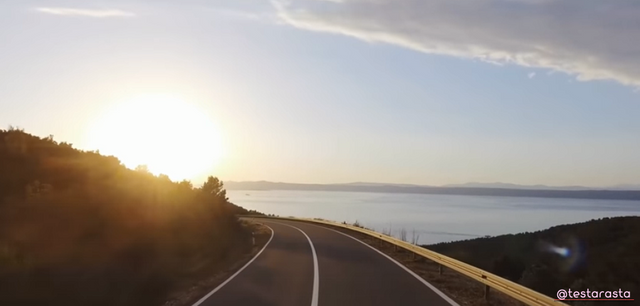
I tell them what they are:
#1 - Borghetto di Valeggio sul Mincio (Mantova).
A neighbor villaggio di mulini in province of Verona: Borghetto di Valeggio sul Mincio
Borghetto di Valeggio sul Mincio è to say a delightful post a little.
A neighbor villaggio di mulini prays diventato a piccolo borgo che pare disegnato a matita per un book di fiabe: so beautiful and so perfect it is his line.
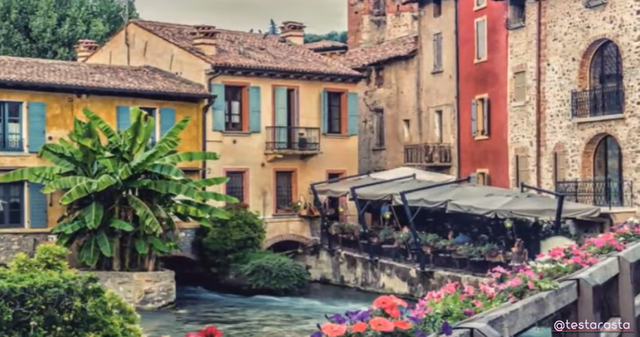
Borghetto di Valeggio sul Mincio is an old village of mills where the wheel that "digs" into the water has always been the symbol of industriousness and life.
Borghetto di Valeggio sul Mincio has always been relative poverty. More a simplicity of life than a real poverty. Work, here there has always been thanks to those wheels that are constantly moving.
# 2 - Sirmione (Brescia).
Sirmione really looks like a small floating island on Lake Garda.
It is no coincidence that its name derives from the Greek syrma, which means "tail", "strip", "wake" precisely because it rises, slightly detached from the rest of the mainland, overlooking the water.
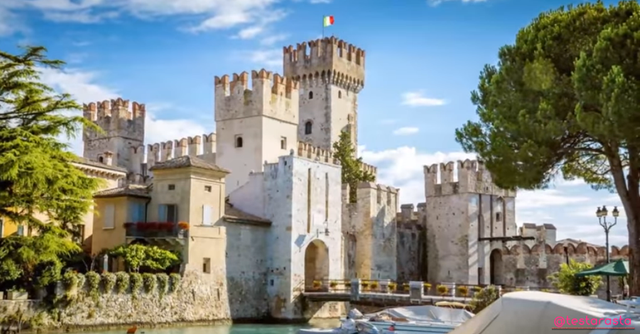
The entrance into the town is extremely suggestive, structured as a drawbridge that introduces itself into the arch between the very high walls of the castle, inside which stands the inhabited village full of shops, clubs, refreshment points, bars and ice cream parlors, all tending to luxury, very refined.
The cobblestone is really typical of ancient countries, although it has been renovated and is very smooth and comfortable, it gives a touch of charm to the whole context.
# 3 - Montalcino (Siena).
South of Siena there is an enchanting medieval village, almost fairytale, surrounded by a mighty wall and dominated by an ancient castle of authentic architectural perfection.
Montalcino, west of Pienza, is a beautiful historical city immersed in the splendid landscape of the Val'Orcia Natural Park and renowned all over the world for the extraordinary production of the precious Brunello di Montalcino.
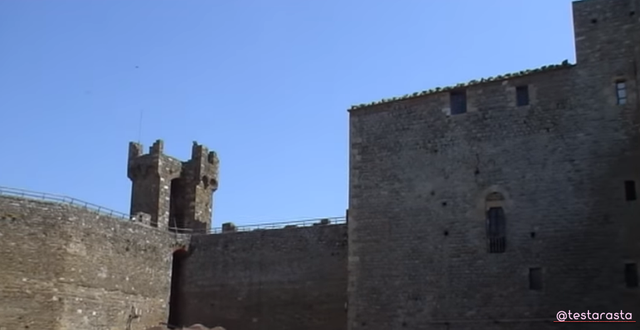
The narrow streets and alleys of Montalcino are truly enchanting and the village is the ideal place to stroll among the maze of delicious arts and crafts shops, cafes, restaurants and wine bars. If you want to bring home a bottle of the superb wine, you are in the right place!
# 4 - Pienza (Siena).
The impression one gets, walking through the alleys of Pienza, is that of a harmonious and proportionate whole; somehow it is as if you were admiring a Renaissance city portrayed in a beautiful painting.
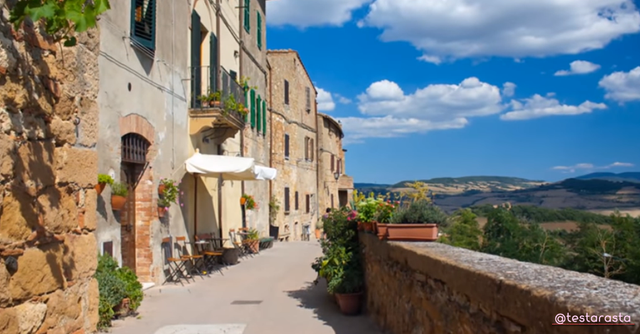
Unforgettable sweet flavors and fragrances will enchant you in Pienza, together with the great panoramas of the Val d'Orcia throughout the country.
A true paradise for all food lovers and for those who love postcard landscapes from Tuscany!
Finally, if you come to Pienza in September, do not miss the famous and fun Fiera del Cacio, a big party dedicated to pecorino cheese and other traditional local products, which you can enjoy for free!
During the event there is also a fun folk game of ancient origins. This is the Palio del Cacio Fuso, where players from all parts of the country have to push and roll entire forms of pecorino cheese around a small wooden spindle located in the center of the main square.
# 5 - Morimondo (Milano).
Founded by Cistercian monks in medieval times, the village of Morimondo is the perfect destination for a trip outside Milan.
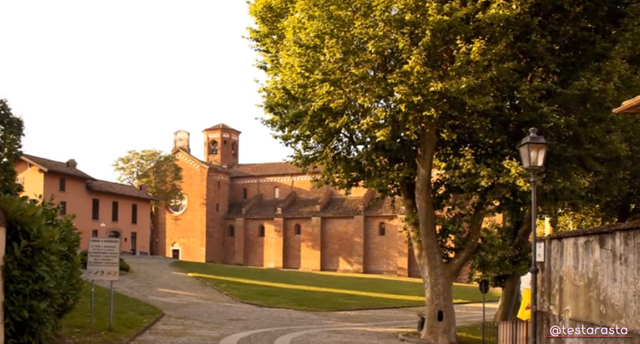
The charming village is a destination for cyclists who travel the many available paths: the cycle path that runs along the Naviglio di Bereguardo from Abbiategrasso to Bereguardo and from Abbiategrasso to the dock in Milan, the Jubilee Path, the Five Churches Path that connects Morimondo to Besate.
Frequented mainly on Sunday by the Milanese, Morimondo is a green oasis in the heart of one of the most industrialized areas of Italy.
And it is a place where time has stopped, where you can visit the Abbey Museum, the educational farm of Cascina Fiorentina and walk in the green: the Ticino Park is not far away, and offers splendid scenarios for a Sunday trip of absolute relaxation.
# 6 - Manarola (La Spezia)
Fraction of Riomaggiore, Manarola is an ancient village on the Ligurian Riviera di Levante and constitutes one of the Cinque Terre.
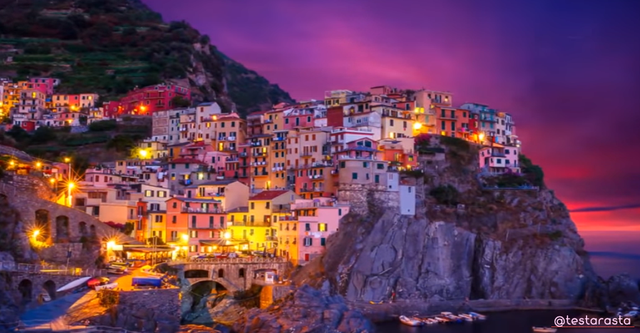
It is characterized by the typical colorful Genoese tower houses that face one another on the main street, called via Discovolo, formed by the coverage of the watercourse. Of the five villages, Manarola is the smallest one after Corniglia.
Manarola originated from the movement of populations that from the Val di Vara and the Roman settlement of Volastra moved to the sea to exploit their resources.
Worth seeing is the main square, around which stand the Oratorio dei Disciplinanti, the bell tower and the Church of San Lorenzo, in Genoese Gothic style and dating back to 1338.
Among the military architectures there is the castle, which was built to protect the village against the incursions of Saracen pirates. The central nucleus of the town subsequently developed around it.
# 7 - Erice (Trapani).
Erice stands on a plateau protected by ancient cyclopean walls, such as to form an equilateral triangle plant. The walls of Erice are very ancient and constitute a real work of military engineering in defense of the city.
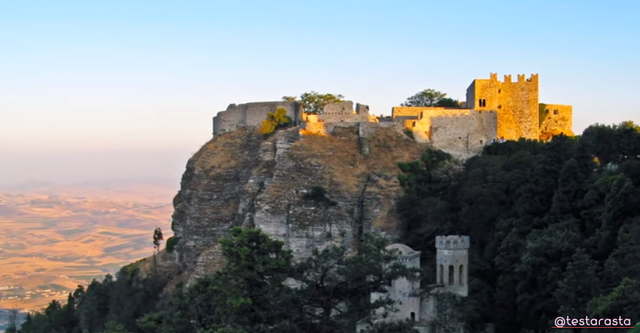
The origin of the name has ancient and mythological roots, Erice, from the son of Venus and Bute. And then again from Aceste and Elimo, this is why it is called the Monte del mito.
The numerous legends and the strong mystical charge of this place make Erice even more suggestive during a foggy day.
Erice is 15 km from Trapani and is 750 meters above sea level, in a splendid panoramic position thanks to which on clear days you can even see Etna on the horizon.
Today it is famous for the prestigious Scientific Culture Center "Ettore Majorana", founded in 1963, which qualifies it as a City of Science for Peace.
In this small town with timeless charm, there are numerous churches, raised by the various dominations that have followed one another over the years: Normans, Swabians, Aragonese. Indeed, Erice is also known as the Mountain of the Lord.
# 8 - Civita di Bagnoregio (Viterbo).
Perched on a hill, threatened by landslides and erosion of the soil, to reach it you need to cross a 200-meter long bridge that from the nearest hill leads to the gateway to the historic center.
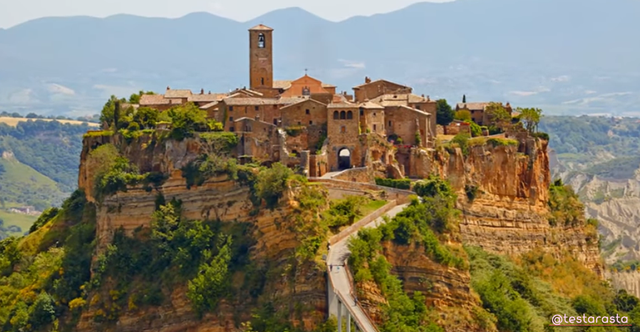
In recent years, however, several houses have been renovated and in the summer they host foreign artists and vacationers and today Civita is experiencing a new phase of development, thanks to tourists who come every year to admire it but who at the same time made it necessary to have forms of controlled access for do not damage the fragile balance of ancient structures.
The current appearance of the village dates back to the end of the Middle Ages and since then it has remained almost intact, giving this place the fascinating aura of a place where time has stood still.
However, it has led to a progressive emptying of the country.
Already in the mid-nineteenth century only a handful of people lived there, while most of the inhabitants had moved to the Municipality of Bagnoregio.
# 9 - Cervo (Imperia).
Less than 10 km from the center of Imperia there is one of the most beautiful villages in Italy. Let's talk about Cervo, or as it is often called Cervo Ligure.
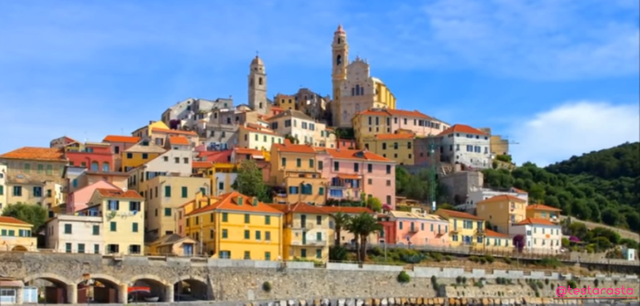
This village close to the sea has preserved its medieval features over time and is now a real pearl of Liguria appreciated both for its architectural beauty and for the unique landscape that surrounds it. In front of us we have the blue and infinity of the sea, while behind us the green hills dominate.
10.- Spello (Perugia).
Walks and trekking on the marked trails of Monte Subasio, where you can reach the hiking refuge in La Spella.
The Monte Subasio Park is a place of Franciscan memories, scattered along the mountain of hermitages and therefore called the "mystical park".
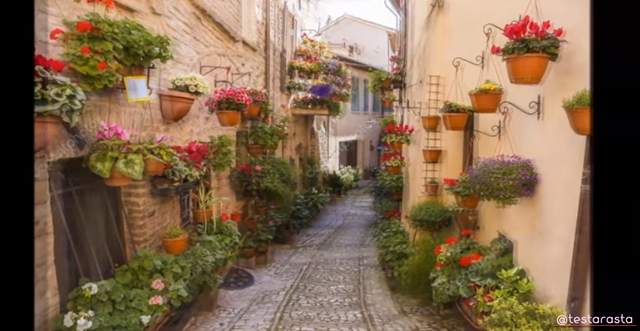
For art lovers, the church of Santa Maria di Vico, a typical example of a Christian temple with a central plan of the 16th century, is worth seeing in the vast suburban area; the monumental complex of San Girolamo from the 15th century; the abbey of San Silvestro (IX century) immersed in the unspoiled forest of Mount Subasio; the oratory of Santa Maria della Misericordia, testimony to the devotional and hospitality activity that characterized life in Spello throughout the Middle Ages; the eighteenth-century Villa Fidelia with its Italian garden; the small mountain village of Collepino recently restored and that of San Giovanni, both clinging to the eastern flanks of Subasio.
For nature lovers, a trip to Monte Subasio is a must, which touches the 1290 m altitude while standing isolated from the Apennine chain.
On its lower slopes you can admire the wide mantle of olive groves arranged in terraces, which are at the origin of the famous Spello oil; the undergrowth hides different quantities of mushrooms and the precious black truffle; above 900 m meadows full of flowers and medicinal herbs.
View this post on TravelFeed for the best experience.
Congratulations @testarasta! You received a sweet smile from TravelFeed. We love your work so keep up the good job. 😊
Thanks for using TravelFeed!
@elsaenroute (TravelFeed team)
PS: Have you joined our Discord yet? This is where over 1000 members of the TravelFeed come together to chat. Join us!